How to Dry Fresh Herbs to Preserve that Garden-Fresh Flavor
Herb growing tipsDried herbs are convenient. And pricey! But herbs and spices make our food so flavorful, and just a little pinch can make all the difference in a savory meal. That’s why gardeners are so smart. They know that growing and drying their own fresh herbs is easy, economical, and more flavorful. Dried herbs will last a year or more if dried and stored correctly. Follow these harvesting and drying tips to make the most of your herb garden.

Why Dry Fresh Herbs
We prefer using fresh herbs whenever we can. And a kitchen herb garden right outside the back door means we can pick whenever we need a pinch of this or that. But there are many benefits to having dried herbs as well.
-
Long-term storage. Dried herbs can be stored for months and stay fresh for up to a year.
Convenient. Dried herbs are excellent when you need herbs for infusions, tinctures, and cooking.
Flavor. Dried herbs are also delicious in homemade rubs for meats. A jar of dried thyme makes adding a teaspoon to your favorite chicken noodle soup convenient.
Economical. Drying your own herbs will save you money compared to buying bottles of herbs at the grocery store. And they’ll taste much better.
Quality control. Growing and harvesting your own fresh herbs means you know where they came from. Many commercially grown herbs and spices are from questionable sources. You can also grow them organically from seed to harvest.
When you’re growing your fresh herbs, whether for medicinal or culinary uses, it’s easy and economical to dry them for long-term storage and everyday use.

How to Dry Fresh Herbs from Your Garden
Each herb has its specific uses, which will determine when and how to harvest, dry, and store. This herb harvesting and drying overview will cover the basics you need to know to make the most of your homegrown herbs.

Harvest Fresh Herbs at the Right Time
Harvesting herbs at the right time will give you the best flavor. This includes when to harvest during the growing season as well as what time of day.
Many herbs need to be harvested before they start flowering, as this can change the flavor. This is especially true with oregano and basil. Chives, however, can be harvested at any time.
Medicinal herbs such as chamomile and calendula are harvested for their flowers. Culinary herbs are usually harvested for their leaves. Knowing what you want to use your herbs for will determine when and what plant parts you gather.
Harvest herbs early in the morning after the dew has mostly dried and before the sun has heated up the plant oils. At this time, the flavor of the herbs will be the most potent. Use sharp shears to make clean cuts of stems. Never remove more than 1/3 of the plant at a time if you want it to continue growing.
Choose brightly colored and fresh-looking leaves and stems. Discard leaves and stems that are yellowed, wilted, or have insect damage. These won’t be as flavorful and will affect the quality of the finished herbs.
Rinse the harvested herbs and pat them dry with paper towels.
Label your herbs right away. Especially if you’re harvesting more than one herb at a time. Many herbs look alike once they are dry. You don’t want to put cilantro in a recipe calling for mint!

Simple Methods For Drying Fresh Herbs
Preserving the essential oils in herbs is important for the best flavor. This requires keeping herbs away from sunlight and using low heat to dry them. Adequate airflow is also crucial to keep the herbs from getting moldy as they dry.
Air Drying
Air drying is the simplest and most trusted way to dry herbs. Oregano, rosemary, sage, and thyme are some of the easiest herbs to air dry. They have less moisture and sturdy leaves. For air drying, tie the cut herbs in small bundles to hang upside down. Large bundles may look pretty, but you need good airflow for the herbs to dry without molding.
Dehydrator
Using a dehydrator is a faster way of air drying and is necessary in high-humidity climates. High-moisture herbs such as mint, basil, and cilantro need to dry quickly to avoid spoiling and are prime herbs for dehydrators. The optimal temperature for drying herbs in a dehydrator is 95 - 115ºF. Again, the lower the temperature, the better.

Oven Drying
It is possible to dry herbs in the oven, although it is a little tricky. You want to keep the temperature low enough to dry the herbs without cooking them. This will take several hours on the lowest setting. Spread the leaves over a baking sheet and keep a close eye on the process. If you are drying medicinal herbs, this method can lower the amount of valuable oils.
Microwave Drying
Although not recommended, it is possible to dry herbs in the microwave. However, this is more like cooking herbs and will affect the flavor. Place herbs between paper towels and microwave for 30 seconds. If needed, add a few more seconds and continue checking. This takes careful skill, as herbs can quickly turn into smoldering ash.
Herbs that are sufficiently dry for storage should crumble or break easily. A sage leaf should snap in half, not bend.
For specifics on drying each type of herb, you can review our growing guide for each herb.
Click here for specifics on harvesting and drying herbs for making herbal tea.

Storing Dried Herbs
Storing herbs correctly will keep them dry and flavorful for up to a year. Before storing, ensure that the herbs are dehydrated. Store in airtight containers away from light and heat. It’s best to keep dried herbs whole until ready to use.

Using Dried Herbs
There are a few things about using dried herbs that you’ll need to know.
Dried herbs are more potent than fresh. A general rule is to use 1/3 to 1/4 of dried herbs in place of fresh.
Dried herbs need time to fully rehydrate for the best flavor. When substituting dry herbs for fresh, you may need to add them earlier in the cooking process.
Herb Drying FAQs
What is the best way to dry fresh basil?
Basil is considered a high-moisture herb. In dry climates, it can be hung upside down to dry. However, in humid climates, it is better to dry basil in a dehydrator so that it doesn't mold.
How long does it take to air dry herbs?
It can take 1 to 2 weeks to air dry herbs. It all depends on the moisture content of the herbs as well as the humidity. Herbs will dry faster in dry climates.
When is the best time to harvest herbs for drying?
The best time to harvest herbs is when the flavor is the most potent. For most herbs, this is in the morning when the dew is drying and before the sun has heated up the plant.
Growing your own herb garden gives you instant access to fresh herbs. And drying those garden fresh herbs will extend the flavor long after harvest. Follow these tips for drying herbs, and you’ll love the convenience of always having your favorite herbs on hand.
Start growing and drying your own herbs today!
If you found this information helpful, share it with your gardening friends!




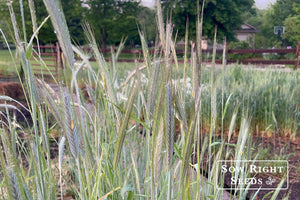
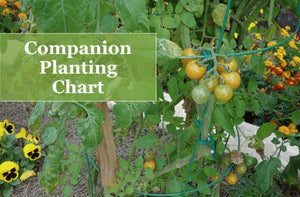
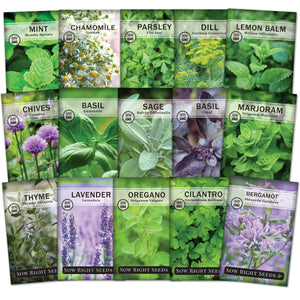
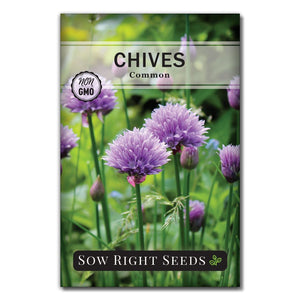
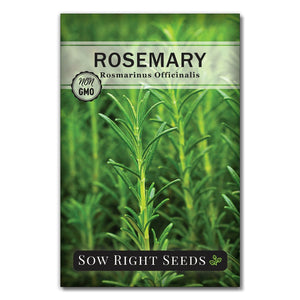
My daughter lives on the east coast and one year we visited them and she took us to one of the earliest pilgrim settlements on display. Here is where i learned and starting drying my own herbs the way the earliest pilgrims did but i used my outside storage shed. The early pilgrims use their attic and used what they needed but left them there to dry all year round. Now that people living in Condo’s don’t have the means of a storage shed but have a dehydrator, it makes it more convenient for them to dry and be able to store what they dry in their condo.
Leave a comment